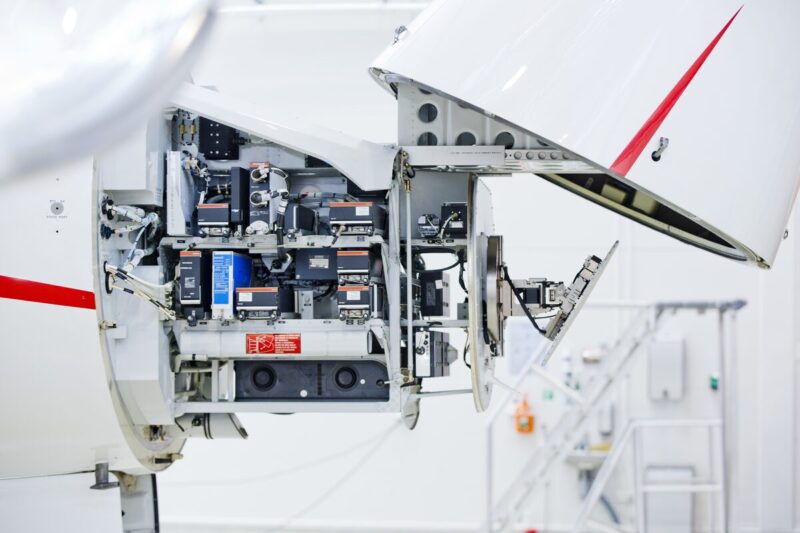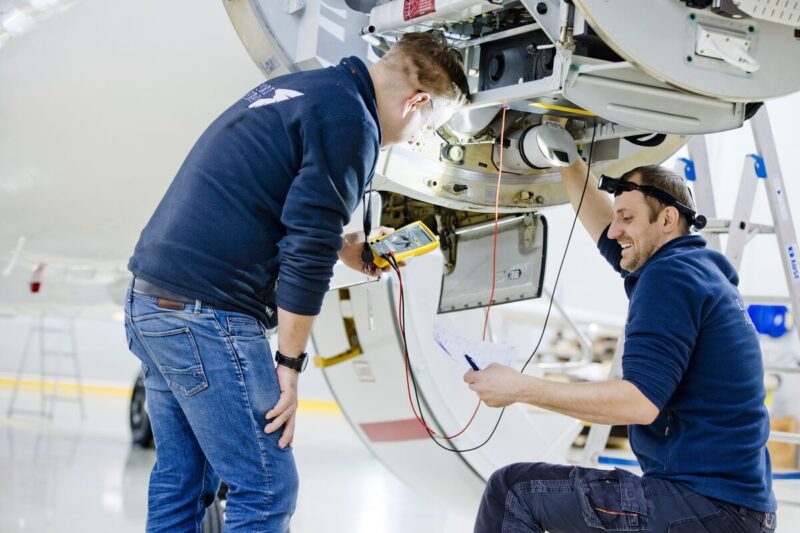Maintenance
Understanding Testing in Aviation Maintenance
The Integral Role of Testing in Part 145
In the realm of aviation maintenance, particularly under Part 145 regulations, testing stands as a pivotal procedure. It’s not merely about ensuring that components work but about certifying that they operate with peak efficiency, safety, and in compliance with all regulatory standards.
Components of Testing in Part 145 Maintenance
Functional Testing
Functional testing ensures that every component, system, or subsystem of an aircraft operates as intended. For instance, after repairing or overhauling an avionic system, functional tests are conducted to verify its proper operation.
Non-Destructive Testing (NDT)
NDT is a suite of techniques used to evaluate the properties of a material, component, or system without causing damage. Common methods include ultrasonic, radiographic, and magnetic particle testing. These methods can detect internal or hidden defects, ensuring the structural integrity of aircraft components.
Calibration Testing
Instruments and equipment used in aircraft need regular calibration testing to ensure they provide accurate measurements. This is especially vital for navigation, communication, and monitoring systems.
Stress and Fatigue Testing
Certain components, especially those in an aircraft’s structure, are subjected to stress and fatigue testing. This evaluates how they might behave under extreme conditions or prolonged use.
System Integration Testing
When new systems are introduced or existing ones are modified, system integration testing ensures they seamlessly integrate and function with other systems on the aircraft.

Fort Aero’s Excellence in Testing Services
Comprehensive Testing Procedures
At Fort Aero, our testing procedures are thorough, reflecting our unwavering commitment to aircraft safety and efficiency. We cover everything from individual component testing to entire system evaluations.
Advanced Testing Equipment
Our facilities are equipped with state-of-the-art testing equipment, ensuring accurate, reliable, and efficient testing outcomes. We stay abreast of technological advancements to continuously enhance our testing capabilities.
Expertise and Precision
Our team of technicians and engineers possesses deep expertise in various testing methodologies. Every test is conducted with meticulous attention to detail, ensuring that no issue, however minor, goes undetected.
Adherence to Part 145 Regulations
We strictly adhere to Part 145 regulations in all our testing procedures. Our commitment to these standards ensures that aircraft serviced by Fort Aero meet the highest benchmarks of safety and performance.
Continuous Improvement
At Fort Aero, we believe in continuous improvement. We regularly review and refine our testing processes, ensuring they remain at the forefront of industry best practices.
Global Presence
With our global network, we can provide testing services at various locations, offering flexibility and convenience to our clients while ensuring consistent quality and adherence to standards.

Advancing Aviation Safety Through Rigorous Testing
Before drawing to a conclusion, it’s crucial to underscore the significance of Fort Aero’s advanced testing methodologies in advancing aviation safety and operational excellence. Fort Aero’s approach to testing under Part 145 regulations is not just a procedural necessity; it’s a cornerstone of their commitment to ensuring the highest levels of safety and performance in the aviation industry. Through a combination of functional testing, non-destructive testing (NDT), calibration testing, stress and fatigue testing, and system integration testing, Fort Aero sets a benchmark in identifying and mitigating potential risks before they impact operations. This proactive stance on testing reflects a deep understanding of the critical role that thorough, precise testing plays in maintaining the integrity of aircraft systems and components. By integrating advanced testing equipment and leveraging the expertise of skilled technicians, Fort Aero not only complies with stringent regulatory standards but also fosters a culture of continuous improvement and innovation in aviation safety practices.
Conclusion
Testing in the context of Part 145 maintenance is a complex and indispensable aspect of aviation maintenance. It is the bedrock upon which the safety, efficiency, and reliability of aircraft rest. At Fort Aero, we understand the gravity of this responsibility and approach every testing task with utmost precision, expertise, and dedication. By ensuring that each component and system functions flawlessly, we contribute to the overarching goal of aviation safety.
Written by David Shlick, Chief Operations Officer at FortAero